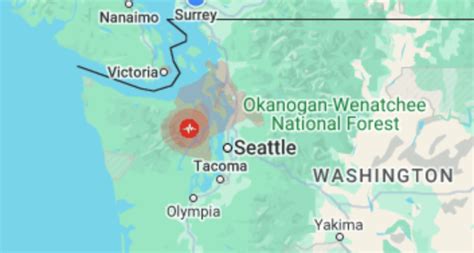Vancouver, Victoria Feel 5.1 Earthquake: A Comprehensive Recipe for Staying Safe
On [Date of Earthquake], a 5.1 magnitude earthquake shook the waters off the coast of Vancouver Island, sending tremors through Vancouver and Victoria. While thankfully no major damage was reported, the event served as a stark reminder of the importance of earthquake preparedness. This post will not detail the specifics of that particular earthquake, but rather serve as a guide to earthquake safety.
Understanding Earthquake Risks in Vancouver and Victoria
Both Vancouver and Victoria are situated in a seismically active zone. The Cascadia Subduction Zone, capable of generating massive earthquakes, lies just off the coast. Understanding this risk is crucial for personal safety and preparedness.
What to Expect: While a major earthquake is a possibility, smaller tremors like the 5.1 quake are more common. These can still be disruptive, causing objects to fall and leading to potential injuries. Being prepared for these smaller events will increase your readiness for a larger event.
The "Recipe" for Earthquake Safety: A Step-by-Step Guide
This guide outlines essential steps for both before and after an earthquake:
Phase 1: Before the Quake (Preparation is Key)
- Develop an Earthquake Preparedness Plan: This is your foundational recipe ingredient. Consider:
- Meeting Points: Establish a primary and secondary meeting place outside your home.
- Emergency Contacts: Ensure everyone has a list of important contacts readily available.
- Emergency Kit: This is your earthquake survival kit. Include:
- Water (1 gallon per person per day for at least 3 days): This is crucial for hydration.
- Non-perishable food (3-day supply): Easy-to-prepare items are essential.
- First-aid kit: Include bandages, antiseptic wipes, pain relievers, etc.
- Flashlight and extra batteries: Reliable lighting is critical.
- Radio (battery-powered): Stay informed on emergency broadcasts.
- Whistle: To signal for help if needed.
- Dust mask: Protect your lungs from dust and debris.
- Wrench or pliers: To turn off utilities if necessary.
- Local maps: In case of communication disruptions.
- Secure Your Home:
- Anchor heavy objects: Secure bookshelves, mirrors, and other heavy items to walls.
- Reinforce weak areas: Address any structural weaknesses in your home.
- Know your home's shut-off valves: Locate and understand how to turn off gas, water, and electricity.
Phase 2: During the Quake (React Safely and Calmly)
- Drop, Cover, and Hold On: This is the most important action. Drop to the ground, take cover under a sturdy table or desk, and hold on until the shaking stops.
- Stay away from windows and doorways: These are common points of failure.
- If you're outside, move away from buildings, trees, and power lines.
- If you're driving, pull over to a safe location and stop.
Phase 3: After the Quake (Assess and Recover)
- Check for injuries: Administer first aid if needed.
- Check for gas leaks: If you smell gas, evacuate the area immediately.
- Turn off utilities if necessary: Only if it's safe to do so.
- Listen to emergency broadcasts: Stay informed on the situation.
- Avoid damaged areas: Stay clear of damaged buildings and infrastructure.
- Help others if it's safe to do so: Offer assistance to those who may need it.
Beyond the Recipe: Ongoing Preparedness
Earthquake preparedness is an ongoing process. Regularly check your emergency kit, update your plan, and stay informed about earthquake safety measures. The more prepared you are, the better you’ll be equipped to handle any seismic event. By following these steps, you'll be well-prepared to navigate a future earthquake and protect yourself and your loved ones.
